As an English major, I used to spend a lot of time thinking about the types of conflict in our stories and which ones would be best suited to the kind of work I planned to do. Man vs. nature? Man vs. man? Man vs. self? Man vs. society? The scroll of possibilities is as long as it is useless. If a story is a story, conflict will emerge. If it doesn't, it's not a story.
When it comes to baseball, especially this time of the year, we tend to think of conflict in a very straightforward way: position battles. Here's one: Joe Jimenez vs. Drew VerHagen (and others) for primary set-up guy in the Detroit Tigers' bullpen.
I find that interesting. You might as well if you are in a ridiculously deep fantasy league or are simply a fellow depth-chart wonk. But a list of those kinds of competitions, team by team, can quickly lose its luster. It certainly did for me. For one thing, the outcomes of many spring training "competitions" are pretty easy to guess, though at first blush I don't have an obvious pick in the Jimenez vs. VerHagen showdown.
There will be other types of conflict in play over the next five-plus weeks, some of which are a little more subtle than those obvious depth-chart battles. Let's expand the definition of the spring training competition and see what we come up with.
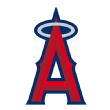 Angels: Zack Cozart vs. third base. Cozart has played 6,207⅔ innings of defense in his big league career. Not one of those frames has come at the hot corner. He has put up 56 defensive runs saved as a shortstop, and you figure the transition to the corner will be smooth enough. But playing third base requires a different skill set than playing shortstop. Cozart should be fine, but it's not a slam dunk that he'll prosper at the new position.
Angels: Zack Cozart vs. third base. Cozart has played 6,207⅔ innings of defense in his big league career. Not one of those frames has come at the hot corner. He has put up 56 defensive runs saved as a shortstop, and you figure the transition to the corner will be smooth enough. But playing third base requires a different skill set than playing shortstop. Cozart should be fine, but it's not a slam dunk that he'll prosper at the new position.
 Astros: The entire roster vs. the championship hangover. This one is a gimme. The Astros are loaded. They are still pretty young. All the key pieces are back, and a few new ones have been added. They are the clear-cut favorites to win it all. Yet, as always, it will not be easy. No team has repeated in this century. From a close vantage point, I watched the 2016 Cubs operate at a fever pitch for months, all the way to a title. Then I watched most of the same players stumble through half of last season as if someone had stolen the espresso machine from the clubhouse. Given the monthlong nature of the current postseason format, this hangover thing is really a thing. Or at least, it will be until some team -- such as the Astros -- proves that it is not.
Astros: The entire roster vs. the championship hangover. This one is a gimme. The Astros are loaded. They are still pretty young. All the key pieces are back, and a few new ones have been added. They are the clear-cut favorites to win it all. Yet, as always, it will not be easy. No team has repeated in this century. From a close vantage point, I watched the 2016 Cubs operate at a fever pitch for months, all the way to a title. Then I watched most of the same players stumble through half of last season as if someone had stolen the espresso machine from the clubhouse. Given the monthlong nature of the current postseason format, this hangover thing is really a thing. Or at least, it will be until some team -- such as the Astros -- proves that it is not.
 Athletics: Rickey vs. the third person. The A's have a ton of young talent, some of which will be on display in Oakland this season: Matt Olson, Matt Chapman, a number or promising pitchers, others. As a way to create a bridge between great Oakland teams of the past and those the A's hope to field in the future, manager Bob Melvin has brought in some franchise legends to serve as special instructors this spring. One of those is Hall of Famer Rickey Henderson. His bona fides are well established: He played for 25 years in the majors and is generally considered to be the best leadoff man ever. He also had a reputation for saying things like, "Rickey was never motivated by stats. He was motivated by numbers. Wins, runs, steals." It would be golden to eavesdrop on Rickey slipping into instructional mode.
Athletics: Rickey vs. the third person. The A's have a ton of young talent, some of which will be on display in Oakland this season: Matt Olson, Matt Chapman, a number or promising pitchers, others. As a way to create a bridge between great Oakland teams of the past and those the A's hope to field in the future, manager Bob Melvin has brought in some franchise legends to serve as special instructors this spring. One of those is Hall of Famer Rickey Henderson. His bona fides are well established: He played for 25 years in the majors and is generally considered to be the best leadoff man ever. He also had a reputation for saying things like, "Rickey was never motivated by stats. He was motivated by numbers. Wins, runs, steals." It would be golden to eavesdrop on Rickey slipping into instructional mode.
 Blue Jays: Team vs. Father Time. Toronto needs to hit the ground running this season and establish forward momentum in Florida that will carry the Blue Jays into a pivotal regular season. Josh Donaldson has already acknowledged that he's likely headed for free agency in a few months. A healthy Toronto roster has enough talent to compete for a wild card, but it's an older group, and injuries have been a problem. Troy Tulowitzki is still recovering from his terrible ankle injury, so that's one complication inherited from last season. If the Blue Jays don't show well early, it seems likely that the team will have to turn the page when the trade deadline approaches.
Blue Jays: Team vs. Father Time. Toronto needs to hit the ground running this season and establish forward momentum in Florida that will carry the Blue Jays into a pivotal regular season. Josh Donaldson has already acknowledged that he's likely headed for free agency in a few months. A healthy Toronto roster has enough talent to compete for a wild card, but it's an older group, and injuries have been a problem. Troy Tulowitzki is still recovering from his terrible ankle injury, so that's one complication inherited from last season. If the Blue Jays don't show well early, it seems likely that the team will have to turn the page when the trade deadline approaches.
 Braves: Ronald Acuna vs. the CBA. Let's face it: Acuna, the game's consensus top prospect, is going to start the 2018 season in the minor leagues. Nothing else makes sense. If Atlanta waits until the latter part of April to call him up, the club gains an extra year of control. Thus is the reality of how service time is meted out under the collective bargaining agreement. Still, let's see if Acuna can blow up this spring and at least give Alex Anthopoulos pause when it comes time to send him out.
Braves: Ronald Acuna vs. the CBA. Let's face it: Acuna, the game's consensus top prospect, is going to start the 2018 season in the minor leagues. Nothing else makes sense. If Atlanta waits until the latter part of April to call him up, the club gains an extra year of control. Thus is the reality of how service time is meted out under the collective bargaining agreement. Still, let's see if Acuna can blow up this spring and at least give Alex Anthopoulos pause when it comes time to send him out.
 Brewers: Second-base competition. Here's a classic position battle. The Brewers have options: Jonathan Villar, Hernan Perez and Eric Sogard. Villar is the favorite. He seemed to establish himself in 2016 by putting up a .826 OPS and leading the NL in steals. But he followed that with a .665 showing last season, forcing Milwaukee to bring in Neil Walker at the position for the Brewers' playoff push. Perez has potential as a superutility player, so locking him into one position would impact the bench. Sogard came out of nowhere to post a .393 OBP after he was brought in during the season. This is a crucial competition for a Milwaukee team hoping to contend. As it stands, my system forecasts the Brewers to finish just 23rd in second-base WAR.
Brewers: Second-base competition. Here's a classic position battle. The Brewers have options: Jonathan Villar, Hernan Perez and Eric Sogard. Villar is the favorite. He seemed to establish himself in 2016 by putting up a .826 OPS and leading the NL in steals. But he followed that with a .665 showing last season, forcing Milwaukee to bring in Neil Walker at the position for the Brewers' playoff push. Perez has potential as a superutility player, so locking him into one position would impact the bench. Sogard came out of nowhere to post a .393 OBP after he was brought in during the season. This is a crucial competition for a Milwaukee team hoping to contend. As it stands, my system forecasts the Brewers to finish just 23rd in second-base WAR.
 Cardinals: Adam Wainwright vs. the rocking chair. Wainwright has been talking about how he doesn't want to talk about retirement, but he seems all too aware that the timing of his eventual baseball swan song depends on him. Wainwright gave up more earned runs and hits than any other NL pitcher in 2016. Then last season, he gave up both at even higher rates, though his mound time was limited by injury to 123⅓ innings. St. Louis has a lot of quality rotation options, and Wainwright, entering his age-36 season, needs to show this spring that there is some gas left in the tank.
Cardinals: Adam Wainwright vs. the rocking chair. Wainwright has been talking about how he doesn't want to talk about retirement, but he seems all too aware that the timing of his eventual baseball swan song depends on him. Wainwright gave up more earned runs and hits than any other NL pitcher in 2016. Then last season, he gave up both at even higher rates, though his mound time was limited by injury to 123⅓ innings. St. Louis has a lot of quality rotation options, and Wainwright, entering his age-36 season, needs to show this spring that there is some gas left in the tank.
 Cubs: Kyle Schwarber vs. self. This winter, ESPN's Jesse Rogers was all over Schwarber's quest to become a different player, with a different body. We get stories such as this every offseason, and then we tend to forget about them. But nothing is more hope-generating than a story about someone who seeks reinvention and pulls it off. The Cubs have little drama in their camp, but watching the "new" Schwarber will provide plenty of intrigue.
Cubs: Kyle Schwarber vs. self. This winter, ESPN's Jesse Rogers was all over Schwarber's quest to become a different player, with a different body. We get stories such as this every offseason, and then we tend to forget about them. But nothing is more hope-generating than a story about someone who seeks reinvention and pulls it off. The Cubs have little drama in their camp, but watching the "new" Schwarber will provide plenty of intrigue.
 Diamondbacks: Archie Bradley vs. the save rule. Well, this item was supposed to be about Arizona's gaping hole in left field in the wake of J.D. Martinez's departure. I was going to tout prospect Socrates Brito, if only because of the possibilities for clever Greek philosopher references. Incidentally, there has never been a Socrates, Plato or Aristotle who reached the big leagues. Anyway, the D-backs ruined that by trading for Tampa Bay's Steven Souza on Tuesday. I'll pivot to the fascinating Bradley. A formerly hyped rotation prospect, Bradley emerged as a multi-use bullpen stud last season and, even more than that, became the voice of the Arizona clubhouse and the object of fan adoration during the D-backs' postseason run. Now, with Fernando Rodney out of the picture, Bradley figures to be the leading closer candidate in camp. If that's how it shakes out, is using Bradley in that way the best use of his talents? More crucially: Can Bradley sit still all the way through a close game, waiting for his chance in the ninth? Brad Boxberger and Yoshihisa Hirano have also been added to the mix, and high on Torey Lovullo's list will be to sort out the back of his pen during camp.
Diamondbacks: Archie Bradley vs. the save rule. Well, this item was supposed to be about Arizona's gaping hole in left field in the wake of J.D. Martinez's departure. I was going to tout prospect Socrates Brito, if only because of the possibilities for clever Greek philosopher references. Incidentally, there has never been a Socrates, Plato or Aristotle who reached the big leagues. Anyway, the D-backs ruined that by trading for Tampa Bay's Steven Souza on Tuesday. I'll pivot to the fascinating Bradley. A formerly hyped rotation prospect, Bradley emerged as a multi-use bullpen stud last season and, even more than that, became the voice of the Arizona clubhouse and the object of fan adoration during the D-backs' postseason run. Now, with Fernando Rodney out of the picture, Bradley figures to be the leading closer candidate in camp. If that's how it shakes out, is using Bradley in that way the best use of his talents? More crucially: Can Bradley sit still all the way through a close game, waiting for his chance in the ninth? Brad Boxberger and Yoshihisa Hirano have also been added to the mix, and high on Torey Lovullo's list will be to sort out the back of his pen during camp.
 Dodgers: Impatience. Let's face it, the Dodgers came one stinking game short of winning their first championship since 1988. There is more than eight months' worth of baseball to play between now and L.A.'s chance to take that last step. The 2015 Royals showed how to leverage a near-miss into months of mono-focused intensity. It's a little different for these Dodgers, who have become a postseason fixture but are also a team teetering on becoming a club that doesn't finish the job. Is there anyone in L.A. who wouldn't like to skip straight to the World Series? You can't do that, of course. There are no shortcuts, beginning with and including the tedium of an exhibition-season schedule.
Dodgers: Impatience. Let's face it, the Dodgers came one stinking game short of winning their first championship since 1988. There is more than eight months' worth of baseball to play between now and L.A.'s chance to take that last step. The 2015 Royals showed how to leverage a near-miss into months of mono-focused intensity. It's a little different for these Dodgers, who have become a postseason fixture but are also a team teetering on becoming a club that doesn't finish the job. Is there anyone in L.A. who wouldn't like to skip straight to the World Series? You can't do that, of course. There are no shortcuts, beginning with and including the tedium of an exhibition-season schedule.
 Giants: This year vs. last year. A bad season is one thing. A 98-loss collapse is something else. The Giants have built this year's team as if 2017 never happened. The 2016 team is the real baseline. Given San Francisco's long-term payroll load, it's a defensible approach. The margin is small for this team, as it always is for an old club, limited athletically, with no money left to get impact players from the outside. A lot of things have to go right for San Francisco, and it starts with the spring. Winning practice games doesn't matter, but keeping players healthy, coalescing roles and positioning for a fast start all begin now. The Giants can't afford to let things start to roll downhill like they did in 2017.
Giants: This year vs. last year. A bad season is one thing. A 98-loss collapse is something else. The Giants have built this year's team as if 2017 never happened. The 2016 team is the real baseline. Given San Francisco's long-term payroll load, it's a defensible approach. The margin is small for this team, as it always is for an old club, limited athletically, with no money left to get impact players from the outside. A lot of things have to go right for San Francisco, and it starts with the spring. Winning practice games doesn't matter, but keeping players healthy, coalescing roles and positioning for a fast start all begin now. The Giants can't afford to let things start to roll downhill like they did in 2017.
 Indians: Jason Kipnis vs. second base. Kipnis was a foundation player during the rise of these Indians up to and including the 2016 World Series. His injury-plagued 2017 season has changed things. Kipnis was limited to 90 games, and he lost 106 points of OPS over the previous season. He was usurped at second base by Jose Ramirez, who emerged as a star with both the bat and the glove. Still, it looks like Cleveland can most often put its best group on the field by returning Kipnis to second base and switching Ramirez back to third. However, entering his age-31 season, Kipnis has a lot to prove. He needs to show that last season's offensive slip was a fluke and show enough glove to justify keeping Ramirez off the keystone.
Indians: Jason Kipnis vs. second base. Kipnis was a foundation player during the rise of these Indians up to and including the 2016 World Series. His injury-plagued 2017 season has changed things. Kipnis was limited to 90 games, and he lost 106 points of OPS over the previous season. He was usurped at second base by Jose Ramirez, who emerged as a star with both the bat and the glove. Still, it looks like Cleveland can most often put its best group on the field by returning Kipnis to second base and switching Ramirez back to third. However, entering his age-31 season, Kipnis has a lot to prove. He needs to show that last season's offensive slip was a fluke and show enough glove to justify keeping Ramirez off the keystone.
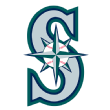 Mariners: Felix Hernandez vs. King Felix. Hernandez hasn't had elite zip on his pitches for a few years now. His slide has been both gradual and consistent, but after he logged just 86⅔ innings in 2017 with a 4.36 ERA, Hernandez is in many ways starting over. The King Felix days are almost certainly gone. But great pitchers find ways to remain productive even after their elite stuff has dried up. Hernandez has enough pitches to figure it out, but it's not even a given that he'll start Seattle's opener over James Paxton.
Mariners: Felix Hernandez vs. King Felix. Hernandez hasn't had elite zip on his pitches for a few years now. His slide has been both gradual and consistent, but after he logged just 86⅔ innings in 2017 with a 4.36 ERA, Hernandez is in many ways starting over. The King Felix days are almost certainly gone. But great pitchers find ways to remain productive even after their elite stuff has dried up. Hernandez has enough pitches to figure it out, but it's not even a given that he'll start Seattle's opener over James Paxton.
 Marlins: Jeter vs. the fans. The Marlins' spring venue (Roger Dean Stadium) is only 82 miles from Marlins Park. In other words, any dissenters among Miami's rankled fan base won't have to go far to express any frustration that might have built up over the contentious winter. To their credit, new owners Bruce Sherman and Derek Jeter have thus far been face-forward in explaining themselves this spring. Some fans will get it. Many more will remain irritated over the departures of Giancarlo Stanton, Marcell Ozuna, Christian Yelich and Dee Gordon. This will take time.
Marlins: Jeter vs. the fans. The Marlins' spring venue (Roger Dean Stadium) is only 82 miles from Marlins Park. In other words, any dissenters among Miami's rankled fan base won't have to go far to express any frustration that might have built up over the contentious winter. To their credit, new owners Bruce Sherman and Derek Jeter have thus far been face-forward in explaining themselves this spring. Some fans will get it. Many more will remain irritated over the departures of Giancarlo Stanton, Marcell Ozuna, Christian Yelich and Dee Gordon. This will take time.
 Mets: Matt Harvey vs. The Dark Knight. It just doesn't pay for a hard-throwing pitcher to end up with a catchy moniker. When the stuff is gone, the moniker serves as a constant reminder of that past swagger. For Harvey, everything is riding on this season. Reports over the winter were that he has regained some of his lost zip. However, this isn't a claim that can be faked. Once Harvey takes the hill this spring, we'll know what's what.
Mets: Matt Harvey vs. The Dark Knight. It just doesn't pay for a hard-throwing pitcher to end up with a catchy moniker. When the stuff is gone, the moniker serves as a constant reminder of that past swagger. For Harvey, everything is riding on this season. Reports over the winter were that he has regained some of his lost zip. However, this isn't a claim that can be faked. Once Harvey takes the hill this spring, we'll know what's what.
 Nationals: Bryce Harper vs. that thing he doesn't want to be asked about. I get it. Harper doesn't want to talk about his impending free agency, even though it's the biggest off-the-field story in the game. It's easier to talk about the Marlins. Perhaps it's wise to head off the day-to-day drudgery of answering those questions, especially when he can't give anything like a definitive answer. Still, one problem for a player entering a high-profile walk year is that what you don't say stirs the pot almost as much as what you do say. No one would expect Harper to blurt out, "After the season, I'm signing with the Cubs. Anybody know any good pizza joints in Chicago?" But Nationals fans might yearn for Harper to say, "This is my team. I'm not going anywhere." Obviously, it would be impertinent for Harper to make promises he can't keep, but it's a no-win situation. Still, try as he might, Harper won't be able to completely keep these speculations at bay. Luckily for everyone, he has found ways to have fun with the subject before.
Nationals: Bryce Harper vs. that thing he doesn't want to be asked about. I get it. Harper doesn't want to talk about his impending free agency, even though it's the biggest off-the-field story in the game. It's easier to talk about the Marlins. Perhaps it's wise to head off the day-to-day drudgery of answering those questions, especially when he can't give anything like a definitive answer. Still, one problem for a player entering a high-profile walk year is that what you don't say stirs the pot almost as much as what you do say. No one would expect Harper to blurt out, "After the season, I'm signing with the Cubs. Anybody know any good pizza joints in Chicago?" But Nationals fans might yearn for Harper to say, "This is my team. I'm not going anywhere." Obviously, it would be impertinent for Harper to make promises he can't keep, but it's a no-win situation. Still, try as he might, Harper won't be able to completely keep these speculations at bay. Luckily for everyone, he has found ways to have fun with the subject before.
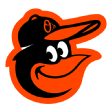 Orioles: Chris Davis vs. virtue. The virtue in question here is patience. Davis has always had a lot of it, in the baseball sense, and it has often paid off for a player who has led the AL in homers twice. Last season, Davis' virtue became a vice during a campaign defined by the sight of him taking third strikes with runners on base. To his credit, Davis has vowed to become more aggressive -- selectively, of course. This might be good news. It might also be bad news if Davis, not known for high rates of contact, suddenly starts chasing too many bad pitches. He has vowed to implement his revised approach this spring. We'll be watching.
Orioles: Chris Davis vs. virtue. The virtue in question here is patience. Davis has always had a lot of it, in the baseball sense, and it has often paid off for a player who has led the AL in homers twice. Last season, Davis' virtue became a vice during a campaign defined by the sight of him taking third strikes with runners on base. To his credit, Davis has vowed to become more aggressive -- selectively, of course. This might be good news. It might also be bad news if Davis, not known for high rates of contact, suddenly starts chasing too many bad pitches. He has vowed to implement his revised approach this spring. We'll be watching.
 Padres: Wil Myers vs. the outfield. However you view San Diego's acquisition of Eric Hosmer, the short-term fallout will be on display from the outset. First, for the plan to work, Myers will need to make a successful transition to an outfield corner. Myers, like Hosmer, is locked up for big money through at least 2022. He has started 193 games in the outfield as a big leaguer, posting minus-17 defensive runs saved in those outings. However, Myers, like Hosmer, is a very good athlete, as evidenced by his 48 stolen bases over the past two seasons. He'll be supported in the outfield by an excellent center fielder in Manny Margot. This, more than Hosmer, is the thing to watch this spring in Padres camp.
Padres: Wil Myers vs. the outfield. However you view San Diego's acquisition of Eric Hosmer, the short-term fallout will be on display from the outset. First, for the plan to work, Myers will need to make a successful transition to an outfield corner. Myers, like Hosmer, is locked up for big money through at least 2022. He has started 193 games in the outfield as a big leaguer, posting minus-17 defensive runs saved in those outings. However, Myers, like Hosmer, is a very good athlete, as evidenced by his 48 stolen bases over the past two seasons. He'll be supported in the outfield by an excellent center fielder in Manny Margot. This, more than Hosmer, is the thing to watch this spring in Padres camp.
 Phillies: Rhys Hoskins vs. the outfield. Not to be redundant, but a similar dynamic to the San Diego experiment will play out in Philadelphia. Wunderkind Hoskins will set out to prove that his rookie season's isolated power percentage (.359) wasn't a fluke. Well, it is a fluke -- it's the best ever among players with a minimum of 200 plate appearances. But he's trying to prove that it isn't that much of a fluke. Hoskins will do this while trying to prove that the Phillies' decision to move him off first base to make room for Carlos Santana was a good one.
Phillies: Rhys Hoskins vs. the outfield. Not to be redundant, but a similar dynamic to the San Diego experiment will play out in Philadelphia. Wunderkind Hoskins will set out to prove that his rookie season's isolated power percentage (.359) wasn't a fluke. Well, it is a fluke -- it's the best ever among players with a minimum of 200 plate appearances. But he's trying to prove that it isn't that much of a fluke. Hoskins will do this while trying to prove that the Phillies' decision to move him off first base to make room for Carlos Santana was a good one.
 Pirates: The team vs. an urgent need to generate excitement. The level of antipathy fans in Pittsburgh directed toward Pirates ownership and management this winter was stunning. What could happen this spring to edge things in the right direction? Probably nothing. As with the Marlins, these wounds will take time to heal.
Pirates: The team vs. an urgent need to generate excitement. The level of antipathy fans in Pittsburgh directed toward Pirates ownership and management this winter was stunning. What could happen this spring to edge things in the right direction? Probably nothing. As with the Marlins, these wounds will take time to heal.
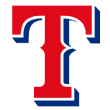 Rangers: The rotation vs. conventional thinking. Texas is right on the edge between fringe wild-card contention and rebuilding, which, in reality, probably puts the Rangers in the rebuilding category. Or building -- Texas is just one season removed from a playoff appearance, and many pieces from that team remain. There is an urgency in Texas as future Hall of Famer Adrian Beltre begins to wind down his career still in search of his first World Series title. The Rangers needed to overhaul their starting staff, which is topped by Cole Hamels, likely joined by Martin Perez, who is recovering from an offseason injury to his non-throwing arm. To round out the staff, Jon Daniels brought in Matt Moore from San Francisco, who is coming off a down year. He signed Mike Minor, who resurrected his career last year in the Kansas City bullpen. He's trying reliever Matt Bush as a starter. And he added veterans Doug Fister and Bartolo Colon, both of whom had mixed-bag seasons in 2017. The approach is creative, and we'll start to see how it pans out over the next few weeks. There is often upside to uncertainty.
Rangers: The rotation vs. conventional thinking. Texas is right on the edge between fringe wild-card contention and rebuilding, which, in reality, probably puts the Rangers in the rebuilding category. Or building -- Texas is just one season removed from a playoff appearance, and many pieces from that team remain. There is an urgency in Texas as future Hall of Famer Adrian Beltre begins to wind down his career still in search of his first World Series title. The Rangers needed to overhaul their starting staff, which is topped by Cole Hamels, likely joined by Martin Perez, who is recovering from an offseason injury to his non-throwing arm. To round out the staff, Jon Daniels brought in Matt Moore from San Francisco, who is coming off a down year. He signed Mike Minor, who resurrected his career last year in the Kansas City bullpen. He's trying reliever Matt Bush as a starter. And he added veterans Doug Fister and Bartolo Colon, both of whom had mixed-bag seasons in 2017. The approach is creative, and we'll start to see how it pans out over the next few weeks. There is often upside to uncertainty.
 Rays: Management vs. players. Even after this week's jettisoning of Steven Souza, Corey Dickerson and Jake Odorizzi, the Rays seem perfectly mediocre on paper. You can't blame the players still on hand for being pissed. Heck, I'm pissed about it, and I have nothing to do with what's happening there. That's not to accuse the Rays of doing something they didn't need to do. It's more to say that if a team has to stretch its resources so far that it DFAs a productive, arbitration-eligible player such as Dickerson, there is a revenue problem in the market that just can't be allowed to persist much longer. Hopefully that proposed new venue across the bay is built sooner than later.
Rays: Management vs. players. Even after this week's jettisoning of Steven Souza, Corey Dickerson and Jake Odorizzi, the Rays seem perfectly mediocre on paper. You can't blame the players still on hand for being pissed. Heck, I'm pissed about it, and I have nothing to do with what's happening there. That's not to accuse the Rays of doing something they didn't need to do. It's more to say that if a team has to stretch its resources so far that it DFAs a productive, arbitration-eligible player such as Dickerson, there is a revenue problem in the market that just can't be allowed to persist much longer. Hopefully that proposed new venue across the bay is built sooner than later.
 Reds: Patience vs. passivity. The offseason could hardly have been less eventful for the Reds. In most rebuilding situations, this would be fair enough. But it's concerning that Cincinnati's lack of urgency could continue to undermine the remaining elite seasons for cornerstone Joey Votto, who will be 35 years old by the end of the coming season. This spring, Cincinnati needs to see a clutch of its young arms show that as a group they are ready to take off. If that happens and the Reds make a run at .500, they better be prepared to spend next winter.
Reds: Patience vs. passivity. The offseason could hardly have been less eventful for the Reds. In most rebuilding situations, this would be fair enough. But it's concerning that Cincinnati's lack of urgency could continue to undermine the remaining elite seasons for cornerstone Joey Votto, who will be 35 years old by the end of the coming season. This spring, Cincinnati needs to see a clutch of its young arms show that as a group they are ready to take off. If that happens and the Reds make a run at .500, they better be prepared to spend next winter.
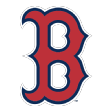 Red Sox: Alex Cora vs. inexperience. You have to admire the willingness of both Cora and New York's Aaron Boone to dive headlong into the belly of the beast. The Red Sox and Yankees enter the 2018 season as co-favorites in the AL East, with the gap between them pretty much closed by Boston's acquisition of J.D. Martinez. Both managers enter a season ripe with lofty expectations and in hyper-intense markets. Cora, as I see it, has a tougher road to navigate. There are potential landmines everywhere after last season's salty campaign in Beantown. Can David Price avoid getting bogged down in media conflicts? For that matter, can Chris Sale? Will Martinez chafe after his moderately disappointing free-agent experience and his new role as a full-time DH? Will Hanley Ramirez grow annoyed at sharing first base with Mitch Moreland? If Dustin Pedroia continues to decline, how will Cora manage that, especially with the capable Eduardo Nunez back in the fold? None of these situations is insurmountable. But it's quite a laundry list for a first-time manager.
Red Sox: Alex Cora vs. inexperience. You have to admire the willingness of both Cora and New York's Aaron Boone to dive headlong into the belly of the beast. The Red Sox and Yankees enter the 2018 season as co-favorites in the AL East, with the gap between them pretty much closed by Boston's acquisition of J.D. Martinez. Both managers enter a season ripe with lofty expectations and in hyper-intense markets. Cora, as I see it, has a tougher road to navigate. There are potential landmines everywhere after last season's salty campaign in Beantown. Can David Price avoid getting bogged down in media conflicts? For that matter, can Chris Sale? Will Martinez chafe after his moderately disappointing free-agent experience and his new role as a full-time DH? Will Hanley Ramirez grow annoyed at sharing first base with Mitch Moreland? If Dustin Pedroia continues to decline, how will Cora manage that, especially with the capable Eduardo Nunez back in the fold? None of these situations is insurmountable. But it's quite a laundry list for a first-time manager.
 Rockies: Ryan McMahon vs. first base. Whispers remain that Colorado might yet bring back last year's first baseman, Mark Reynolds. This week, Ian Desmond told the team's beat reporters that he's preparing as if he'll log the majority of his time in left field this season. That means that as it stands, the rookie McMahon has the inside path to the first-base gig for the Rockies, with all of 24 big league plate appearances under his belt. In the minors, he flashed the kind of gap-to-gap proficiency that would play well in Coors Field if he can make consistent contact. In the minors, he played more third base than first, and he started 35 games at second base last season. He isn't your typical first-base power prospect.
Rockies: Ryan McMahon vs. first base. Whispers remain that Colorado might yet bring back last year's first baseman, Mark Reynolds. This week, Ian Desmond told the team's beat reporters that he's preparing as if he'll log the majority of his time in left field this season. That means that as it stands, the rookie McMahon has the inside path to the first-base gig for the Rockies, with all of 24 big league plate appearances under his belt. In the minors, he flashed the kind of gap-to-gap proficiency that would play well in Coors Field if he can make consistent contact. In the minors, he played more third base than first, and he started 35 games at second base last season. He isn't your typical first-base power prospect.
 Royals: Bubba Starling vs. what might have been. We always knew it would probably be a long and arduous path to the big leagues for Starling. But not this long and not this arduous. Starling was the fifth pick of the 2011 draft, a two-sport high school star out of Kansas who might have become a star quarterback for the Nebraska Cornhuskers had he not chosen the diamond. He has generally been slow to transition to each level up K.C.'s organizational ladder, finally reaching Triple-A in 2016. Last season started so poorly that he nearly quit the game. But he didn't, made some adjustments that clicked and proceeded to put up a solid two and a half months at Omaha, hitting .288/.345/.443 before going down with a season-ending oblique injury. Starling turns 26 in August, and old hopes for stardom have long faded. But if he consolidates those gains with the bat, his superlative defense would make for some bright spots in what is likely to be a dismal season at Kauffman Stadium. This spring is huge for Starling.
Royals: Bubba Starling vs. what might have been. We always knew it would probably be a long and arduous path to the big leagues for Starling. But not this long and not this arduous. Starling was the fifth pick of the 2011 draft, a two-sport high school star out of Kansas who might have become a star quarterback for the Nebraska Cornhuskers had he not chosen the diamond. He has generally been slow to transition to each level up K.C.'s organizational ladder, finally reaching Triple-A in 2016. Last season started so poorly that he nearly quit the game. But he didn't, made some adjustments that clicked and proceeded to put up a solid two and a half months at Omaha, hitting .288/.345/.443 before going down with a season-ending oblique injury. Starling turns 26 in August, and old hopes for stardom have long faded. But if he consolidates those gains with the bat, his superlative defense would make for some bright spots in what is likely to be a dismal season at Kauffman Stadium. This spring is huge for Starling.
 Tigers: Miguel Cabrera vs. inevitable decline. The Tigers aren't really trying to win this season, and in a perfect world, a player of Cabrera's stature wouldn't have to endure a complete team overhaul from the very beginning. But coming off his worst big-league season with six years and $184 million left on his contract, Cabrera isn't going anywhere. I wouldn't go so far as to state that Cabrera is trying to play his way out of Detroit. That's unlikely, even if the Tigers are willing to eat a ton of money. A more modest goal for Cabrera would be to re-establish his late-career trajectory. He doesn't need it for a Hall case, but he could really burnish his historical standing with a couple of more vintage performances. As it stands, he needs 364 hits to reach 3,000 and 38 homers to reach 500. Let's hope for a resurgent Miggy this spring. Detroit fans deserve to have at least that to get through the next couple of seasons.
Tigers: Miguel Cabrera vs. inevitable decline. The Tigers aren't really trying to win this season, and in a perfect world, a player of Cabrera's stature wouldn't have to endure a complete team overhaul from the very beginning. But coming off his worst big-league season with six years and $184 million left on his contract, Cabrera isn't going anywhere. I wouldn't go so far as to state that Cabrera is trying to play his way out of Detroit. That's unlikely, even if the Tigers are willing to eat a ton of money. A more modest goal for Cabrera would be to re-establish his late-career trajectory. He doesn't need it for a Hall case, but he could really burnish his historical standing with a couple of more vintage performances. As it stands, he needs 364 hits to reach 3,000 and 38 homers to reach 500. Let's hope for a resurgent Miggy this spring. Detroit fans deserve to have at least that to get through the next couple of seasons.
 Twins: Jake Odorizzi vs. expectations. Minnesota pursued upper-tier pitching all winter in hopes of turning up a legit ace to head up its staff. The Twins ended up with Odorizzi, who is a good pitcher but not an ace. He'll be more a part of a group effort, along with Ervin Santana, Jose Berrios and Kyle Gibson, among others. But Odorizzi can't be hung up on the notion that he's not Jake Arrieta or Yu Darvish. Last season, Odorizzi gave up 30 homers in just 143⅓ innings. His ERA (4.14) was his worst in a full season and better than it should have been -- he gave up 14 unearned runs and had a fielding-independent ERA (FIP) of 5.43. Forget ace: Odorizzi needs to get back on the right side of replacement level.
Twins: Jake Odorizzi vs. expectations. Minnesota pursued upper-tier pitching all winter in hopes of turning up a legit ace to head up its staff. The Twins ended up with Odorizzi, who is a good pitcher but not an ace. He'll be more a part of a group effort, along with Ervin Santana, Jose Berrios and Kyle Gibson, among others. But Odorizzi can't be hung up on the notion that he's not Jake Arrieta or Yu Darvish. Last season, Odorizzi gave up 30 homers in just 143⅓ innings. His ERA (4.14) was his worst in a full season and better than it should have been -- he gave up 14 unearned runs and had a fielding-independent ERA (FIP) of 5.43. Forget ace: Odorizzi needs to get back on the right side of replacement level.
 White Sox: Luis Robert vs. the unknown. Robert is in his first camp with the White Sox but has yet to log an official game in the continental United States. All of his action -- from the ages of 15 to 19 -- has come either in his native Cuba or in his stint last summer with Chicago's team in the Dominican Republic. You can't even find a projection on the guy. But the anecdotal evidence is exciting. At the winter meetings, Sox manager Rick Renteria said, "He's a pretty impressive specimen. Listen, this kid can fly. I saw him run down to first, I think it was like 3.56 after a full swing on a ground ball. He hit a ball against the wind and a gust in left-center field that I thought had no chance, and it ended up going over the trees." ... How could you not be excited to see this guy?
White Sox: Luis Robert vs. the unknown. Robert is in his first camp with the White Sox but has yet to log an official game in the continental United States. All of his action -- from the ages of 15 to 19 -- has come either in his native Cuba or in his stint last summer with Chicago's team in the Dominican Republic. You can't even find a projection on the guy. But the anecdotal evidence is exciting. At the winter meetings, Sox manager Rick Renteria said, "He's a pretty impressive specimen. Listen, this kid can fly. I saw him run down to first, I think it was like 3.56 after a full swing on a ground ball. He hit a ball against the wind and a gust in left-center field that I thought had no chance, and it ended up going over the trees." ... How could you not be excited to see this guy?
 Yankees: Miguel Andujar vs. third base. The Yankees seem convinced that Andujar's bat is ready to play at the big league level. He certainly didn't look intimidated during his first, brief look at major league pitching last year, going 4-for-7 with four RBIs in five games. But that glove: In 541 minor league games at third base, Andujar put up a .915 fielding percentage. That isn't going to put rumors about New York's love for free-agent-to-be Manny Machado to rest. He needs to show some consistency on defense this spring. If he doesn't, the Yankees just traded for a high-quality infield option in former Diamondback Brandon Drury.
Yankees: Miguel Andujar vs. third base. The Yankees seem convinced that Andujar's bat is ready to play at the big league level. He certainly didn't look intimidated during his first, brief look at major league pitching last year, going 4-for-7 with four RBIs in five games. But that glove: In 541 minor league games at third base, Andujar put up a .915 fielding percentage. That isn't going to put rumors about New York's love for free-agent-to-be Manny Machado to rest. He needs to show some consistency on defense this spring. If he doesn't, the Yankees just traded for a high-quality infield option in former Diamondback Brandon Drury.
